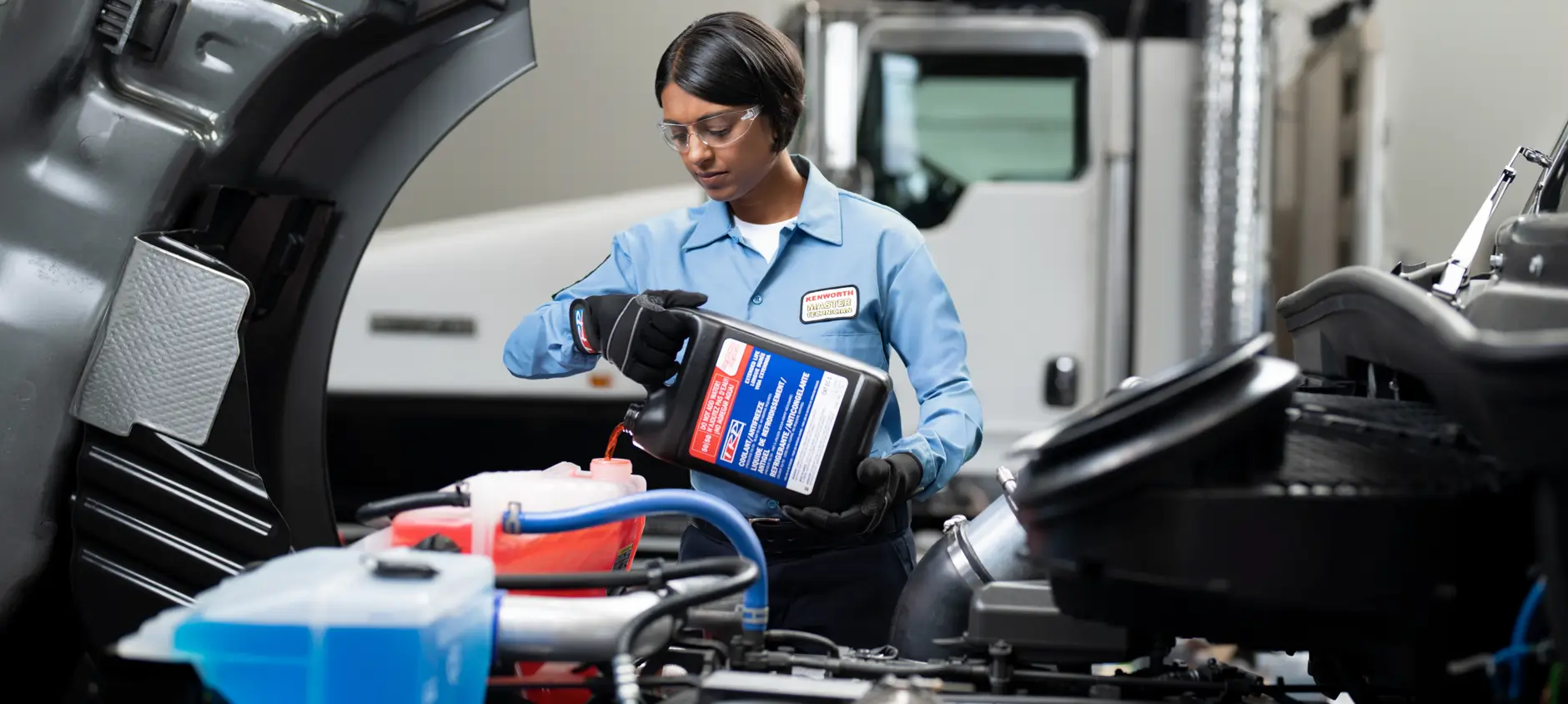
Count on TRP® Coolant For Your Engine Protection
Coolant does much more than simply cool your engine. It also protects your engine and other components from liner pitting, scale, corrosion and freeze damage in cold weather. You can trust TRP Coolant to help protect your engine. This is accomplished by combining the following components in proportions appropriate for the application:
- Glycol provides freeze protection.
- Distilled Water improves boil-over protection and helps dissolve inhibitors.
- Inhibitors provide protection against erosion, corrosion and cavitation or pitting of your cooling system components.
How Can I Use Coolant To Protect Against Damage?
If you don’t use a coolant with the right inhibitors in the correct proportion, an engine can quickly fall prey to damage.
Some of the problems that might occur are:
- Cavitation
- Air bubbles create tiny pits that grow larger over time in liners and water pumps.
- Water Pump Failure
- Improper coolant chemistry or low coolant levels can take out a water pump.
- Inhibitor Dropout
- Inhibitor literally "drops out" of the coolant, clogging radiator passages and low-flow areas including oil coolers and heater cores.
- Corrosion
- Most often seen in radiators, engine blocks and liners, wherever components are exposed to air.
Any one of these issues can eventually put a truck out of service when it's least expected. That means it's critical to make sure your coolant’s chemistry includes the best inhibitors possible to prevent damage.
How Do I Find The Right Coolant Chemistry?
Conventional coolant chemistry requires added inhibitors, also known as supplemental coolant additives (SCAs), for heavy-duty use. Without adding inhibitors, you could see liner damage within 50,000 miles. A fully formulated or heavy-duty conventional coolant is pre-balanced with SCAs, but periodically requires additional SCAs to maintain the appropriate ratio. These coolants must be changed every 200,000-300,000 miles or 2-3 years, with periodic testing and addition of SCAs between changes.
Extended life coolant chemistry includes superior inhibitors, known as Organic Additive Technology (OAT), and don't require additional SCAs. Some coolants, such as TRP® Extended Life Coolant, boost liner cavitation protection even further by adding nitrite to OAT, creating Nitrite Organic Additive Technology (NOAT). TRP® Extended Life Coolant can offer up to a 600,000 mi. service life with the use of just one extender.
